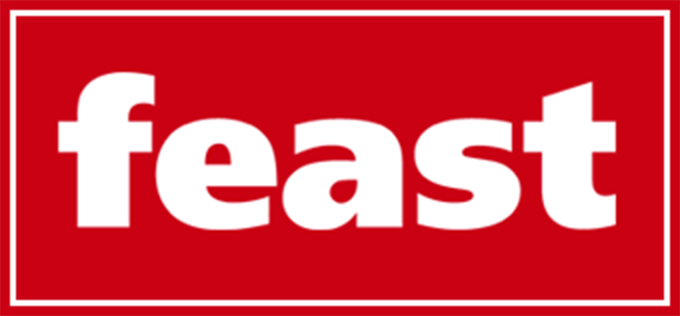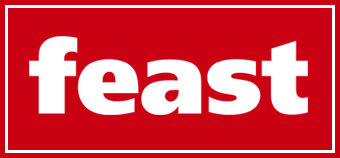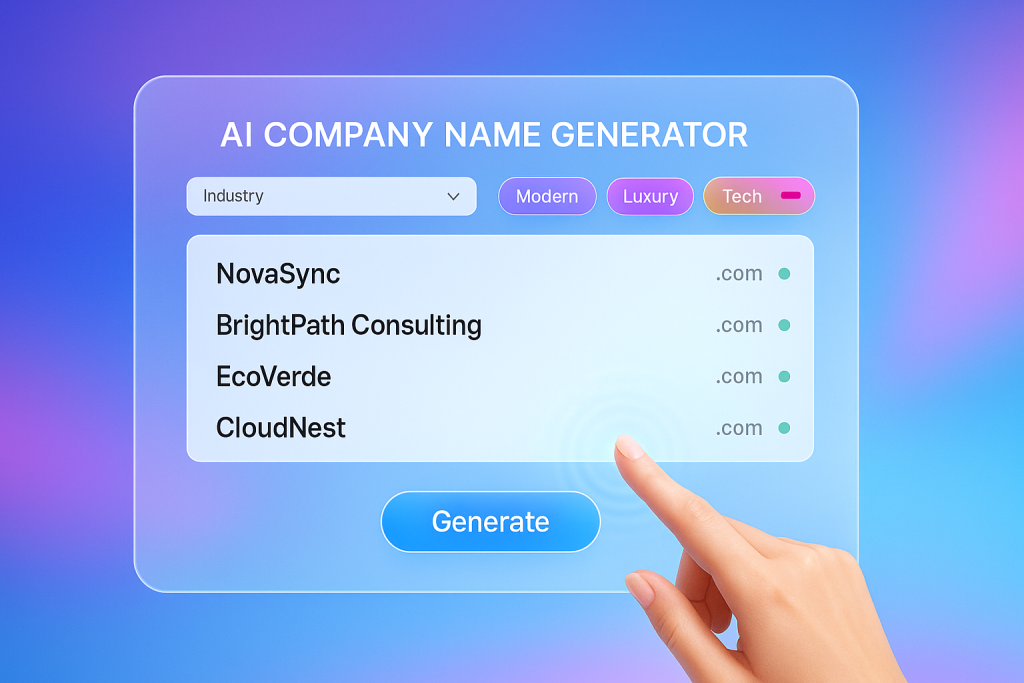The struggle is real: creative spark vs. clarity
Choosing the right business name can feel like walking a tightrope between imagination and precision. Too much creativity, and your audience may not get what you do. Too much clarity, and your brand risks sounding generic or forgettable. Striking the perfect tone—one that reflects your identity, attracts your ideal customer, and stays memorable—is no small feat.
With the rise of AI-powered tools, business owners now have access to name generators that can adapt based on brand tone. But to get the best results, you need to know how to guide the tool toward your desired outcome.
In this article, you’ll learn how to:
- Adjust AI name settings to align with your brand tone
- Understand when to lean into clarity or creativity
- Avoid common pitfalls when generating names
- Refine outputs to create a powerful, balanced brand identity
Let’s dive in…
1. Define your brand’s personality upfront
Before touching any AI tool, take a moment to clarify your brand’s tone. Is your voice playful or professional? Is your value proposition built around innovation, trust, or speed?
For example, a fintech startup might prioritize clarity and confidence (“SecureFlow”) while a creative agency might go for wit and edge (“Zestify”).
Actionable tip: Write down three adjectives that describe your brand’s personality. Use these as your compass while testing names.
Don’t be afraid to get specific. The clearer your brand traits, the better your AI results.
2. Use creativity sliders and keyword filters wisely
Many AI tools now let you fine-tune outputs with creativity levels, formality toggles, or keyword requirements. These settings make a big difference.
For instance, setting creativity to high and including no keywords might yield abstract results like “Twinga” or “Lumona.” Turn down creativity and add the keyword “tech,” and you might get something more descriptive like “NovaTech” or “ClarityAI.”
Pro Tip: Always test a range of creativity levels to compare results and uncover hidden gems.
Remember that the best name often lives somewhere in the middle—creative enough to stand out, but clear enough to be understood.
3. Avoid the trap of overloading with trendy words
It’s tempting to stuff in buzzwords like “cloud,” “meta,” or “quantum,” but overuse makes names feel generic. AI will gladly comply with overused terms if you push it too hard in that direction.
A good AI-generated name should feel fresh and industry-relevant—not like a clone of five other companies.
Actionable tip: Limit your keyword inputs to one or two unique industry anchors.
Remember that less can be more. Let the AI surprise you within strategic constraints.
4. Match tone to customer expectations
If your audience is B2B and risk-averse, playful names may not resonate. On the flip side, if you’re selling to creators or Gen Z, clever and quirky might be just what works.
A health tech startup targeting hospitals might succeed with “Medivera.” A fitness app for teens could thrive with “PulsePop.”
Actionable tip: Think about the setting where your name will appear (pitch decks, social ads, product packaging). Does the tone feel right there?
Don’t try to be everything to everyone. Align tone to the audience that matters most.
5. Evaluate emotional response and sound
Names aren’t just visual—they’re verbal. A name that looks great on paper might fall flat when said aloud. Or it might trigger the wrong emotional association.
Run each name through a quick sound test. Does it roll off the tongue? Does it feel strong, friendly, smart?
Pro Tip: Speak your top three names out loud and imagine introducing your brand at a networking event.
Remember that sound can carry more branding weight than spelling.
6. Refine AI outputs with human curation
AI gets you 80% of the way there. The final 20% comes from human intuition. You’re the one who sees the nuance between two near-identical options. Trust that.
Narrow the list manually. Group similar names together. Eliminate anything that’s awkward, hard to spell, or legally risky.
Actionable tip: Ask a few peers or target customers which names they remember an hour later. Memory is a strong validator.
Don’t delegate final decisions to the algorithm. Use it as a co-pilot.
7. Test in real-world brand scenarios
Take your top names and imagine them in use: as a logo, in a product launch video, on Instagram. Some options shine in design; others look clunky or lose tone in context.
For instance, a name like “Zenterra” might feel sleek on a tech site but awkward in an ecommerce listing.
Actionable tip: Create mockups with your top three names using a tool like Turbologo to preview how they’ll look in real life.
Don’t skip the design step—it will surface issues faster than a name list.
8. Trust the process, not just the tool
The beauty of using a business name generator powered by AI is speed and scale. But naming is still a creative journey. The most powerful brand names aren’t just algorithmic—they’re intentional.
Experiment, evaluate, iterate. You’ll land on something that works.
Examples of Creative Logo Approaches: Spotify, Dropbox, Airbnb
They all strike the tone sweet spot: distinctive, scalable, and human.
Final thoughts: It’s about balance
Creative names spark curiosity. Clear names build trust. The right one for your brand walks the line.
By learning how to tweak AI tools and curate with care, you can develop a name that reflects who you are—and speaks to who you’re serving.
Naming is both science and art. Fortunately, you now have both at your fingertips.
Go find the name that fits.



